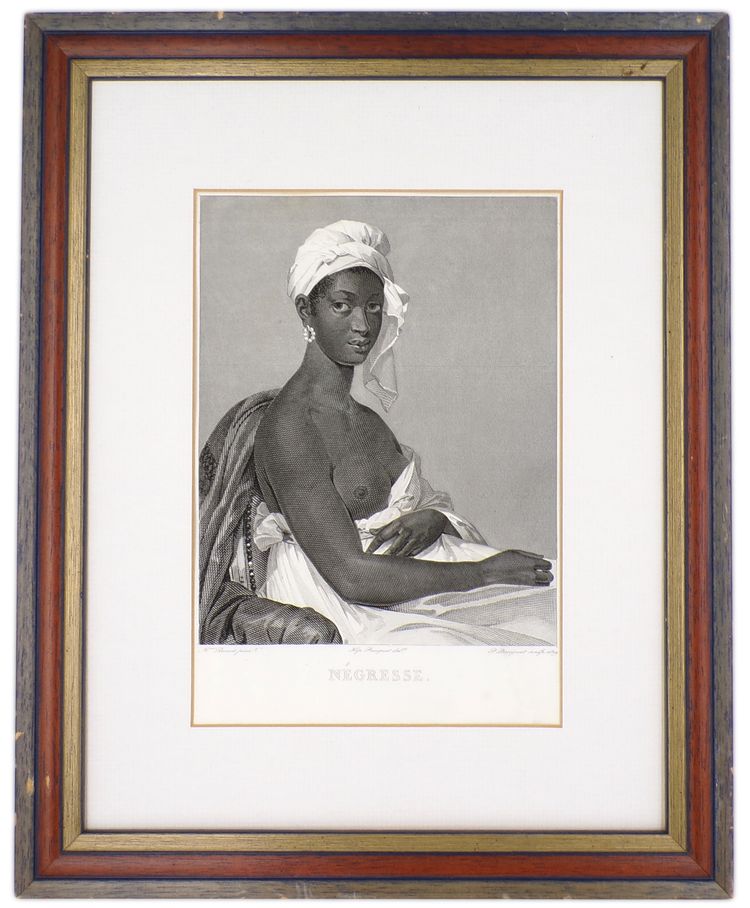One of the greatest portraits of a Black woman ever made
- Regular price
- €0,00 EUR
- Regular price
-
- Sale price
- €0,00 EUR
- Unit price
- per
Polydore-Jean-Charles Pauquet (active 1816-1849); Hippolyte Louis Emile Pacquet (1797-after 1862); Marie Benoist (1768-1826) [after].
Négresse (Portrait de Madeleine).
[Paris], 1829.
Engraving on wove paper. Ca. 31 x 24 cm. Signed and marked “déposé” in the plate.
Engraved portrait of a the Guadeloupean Madeleine, after the phenomenal and renowned painting by woman artist Marie Benoist from 1800. It is now one of the best known portraits in the history of European art and has gained much relevance in recent years. A controversial image from the start, the Louvre bought it from the artist in 1818 and it was there where Hippolyte Pauquet drew the design for the print we offer here. His brother Polydore made the engraving and he had gone out of their way to it in the same direction as the painting, instead of reversed.
What stands out in this portrait is a lack of exoticism, defying the norms of the time. Inspired by neoclassical styles, the work is reminiscent of earlier portraits, albeit with a distinct focus on representing a black woman with dignity and grace. She is seated against an empty background challenges racial and social conventions of the era. Notably, she wears a "tignon," a Creole headdress from the West Indies and Louisiana, adding layers to her identity and heritage.
The evolution of the title of this well-known artwork reflects the changing status of black women in society. The painting was first displayed in public at the Paris Salon of 1800, as Portrait d'une négresse. Slavery had recently been abolitished in France, the first nation to do so. But not long after, in 1802, slavery was reinstated under Napoleon Bonaparte. It was only in 1848 that the enslavement of individuals was finally disallowed in France. Meanwhile the French State had acquired the painting in 1818 and housed it at the Louvre, where it became known as Portrait d'une femme noire. In 2019 she was finally identified as Madeleine and a new title was presented: Portrait de Madeleine.
Modern discussions place the painting in the context of larger changes in society. It caught the eye of the general public when it appeared in Beyoncé and Jay-Z's "Apeshit" music video, filmed at the Louvre in 2018. It has also appeared in recent books and TV shows, highlighting the significance in contemporary culture of this monumental image of a black woman.
In sum, Benoist's portrait of Madeleine transcends its time, sparking conversations about race, representation, and identity in both historical and contemporary contexts.
Condition: Trimmed inside plate line, one side at an angle. Otherwise in very good condition.
Literature: Anne Lafont, Une Africaine au Louvre en 1800, Paris, INHA, 2019.
Couldn't load pickup availability
Share

Contact
Email: hugo@artemrarebooks.com
Phone: +31651042297
Visit us on appointment at:
Former US Embassy
Lange Voorhout 102
2514EJ
The Hague (The Netherlands)
Shipping address:
Nannie van Wehlstraat 51
2548MN
The Hague
The Netherlands

